Nagpur Man Quits Job To Revive Ancestral Land, Now Saves 2 Cr Litres of Water A Year
Anirudh Chaoji from Nagpur used rainwater harvesting, crop rotation, and solar systems to revive the ecosystem of his ancestral land, while also resolving the man-animal conflict in near Umred Karhandla Wildlife Sanctuary and Tadoba Andhari Tiger Reserve.
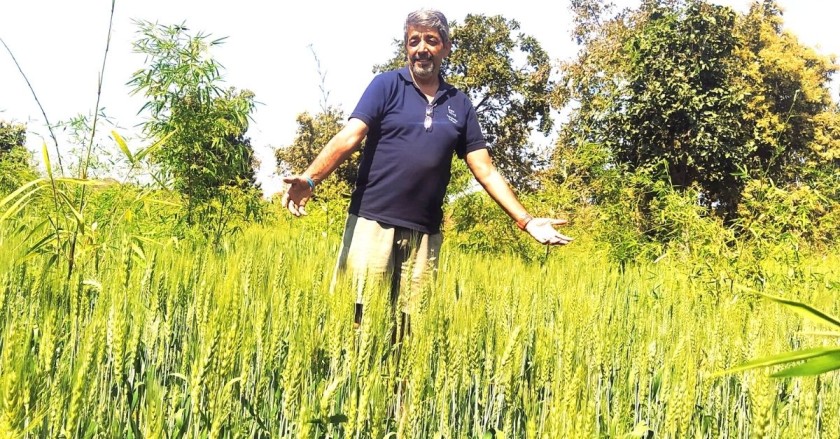
In 2016, when Anirudh Chaoji (54) first returned to his ancestral farm in Nagpur’s Mangli’s village, he was shocked by its deteriorating condition. He saw 6 acres of degrading forest, and a barren land on the remaining four. There was not one blade of grass or soil in sight. The carbon and nitrogen required to cultivate food had vanished.
In a bid to restore the glory of his former home, for the last five years, Anirudh has lived on the farm, situated on the fringes of Umred Karhandla Wildlife Sanctuary, which is part of a corridor with Tadoba Andhari Tiger Reserve. Over the years, he has watched his hard work and dedicated efforts come to fruition in the form of a rich biodiversity.
With lush trees and tall crops, water reservoirs, sensible fences that do not threaten animals, cropping systems and many such measures, Anirudh has not only restored his farm, but also set an example for other farmers in the region, who were struggling with both animal conflict as well as depleting soil fertility.
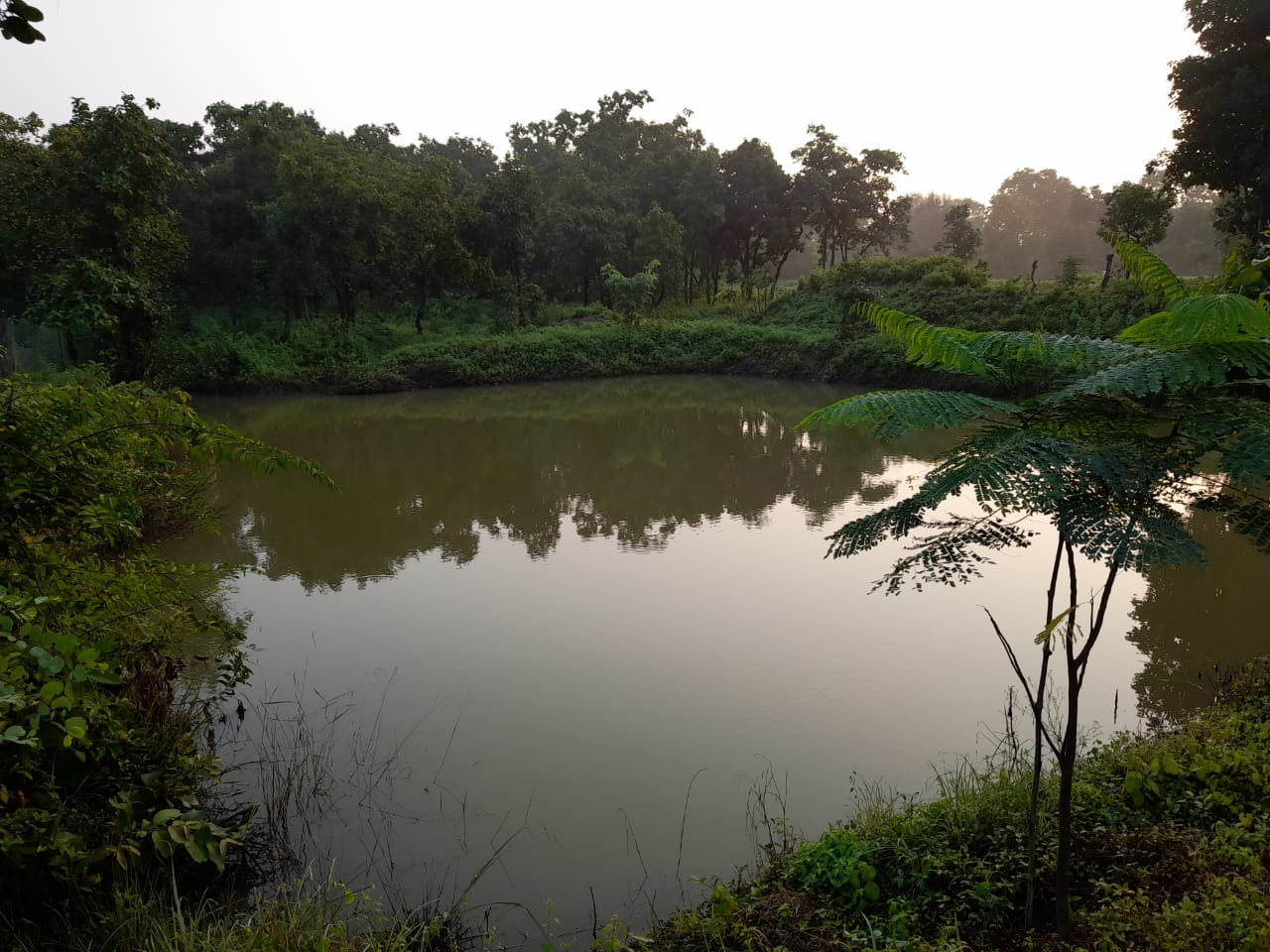
However, Anirudh, who formerly served as an ecologist at Tadoba Tiger Reserve, lacked farming experience, and the process proved to be extremely difficult and frustrating at many junctions, resulting in huge expenditure and crops losses. So what inspired him to leave his own venture, Pugmarks, a travel company for eco-tourism, at the age of 49 to turn to farming on an infertile land?
“It was Pravin Pardeshi, then Principal Secretary Forests, who offered me an opportunity to join the Tadoba Forest Department as an ecologist a few years ago. The department needed someone who would protect the forest by mobilising villagers to coexist with nature, while protecting the wildlife. Since I would be preaching about the environment, I thought it would be ideal to practice it too,” Anirudh tells The Better India.
How crop rotation made the land nutrient-rich
When Anirudh first planned to rejuvenate his dying farmland, he divided the four acres of barren land into sections to grow trees, crops and build water reservoirs. However, having served as an ecologist at the Tadoba Tiger Reserve, he modified his blueprint to accommodate wildlife.
It was a simple survey that helped Anirudh understand farming patterns of Mangli villagers, who practice a single crop cycle. Cotton was, and is still, a dominant crop in the region, considering its high market value. However, cotton also extracts a large amount of nitrogen and nutrients from the soil, without giving anything in return. This decreases soil fertility, and thus, the yield. To maintain a decent level of production, farmers then resort to using harmful pesticides that further damage the soil and ground.
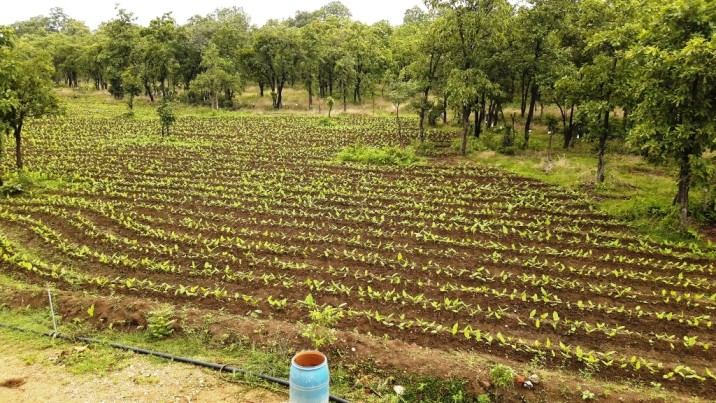
Seeing this vicious cycle, Anirudh tried to bring in the crop rotation system on his farm, where he would plant multiple crops, including cash crops. This way, the land benefits, and he could still earn a decent salary. But this solution was a lot harder to implement. In the first few cycles, his crops were damaged. The strict adherence to organic means of cultivation also affected this, as neighbouring farms used pesticides, which led to moth migration on Anirudh’s farm.
Anirudh says, “Sometimes, the land was too moist, or too dry. Three crops — maize, urad and wheat — didn’t germinate. While the turmeric plantation worked, it was labour-intensive, so I couldn’t generate much revenue from it. I lost nearly 120 bamboo trees. Forest land is very rocky. It takes real effort to understand how nature functions. But once you do, it will provide for you in abundance.”
To overcome these issues, Anirudh focused on making the land carbon-rich through Rotavator, a gardening tool. “It’s primarily used for digging and aerating the soil. I used it to cut plants and bury them inside the soil to give carbon back. I also added jeevamruth. My sister is a horticulture expert, so she guided me through the process,” he says.
Once the soil had gained back its health, Anirudh implemented crop rotation. He planted cotton and then soybean, which is a nitrogen-fixing crop, and not fed on by animals. He followed this with matki (another type of bean), paddy and turmeric on a rotational basis.
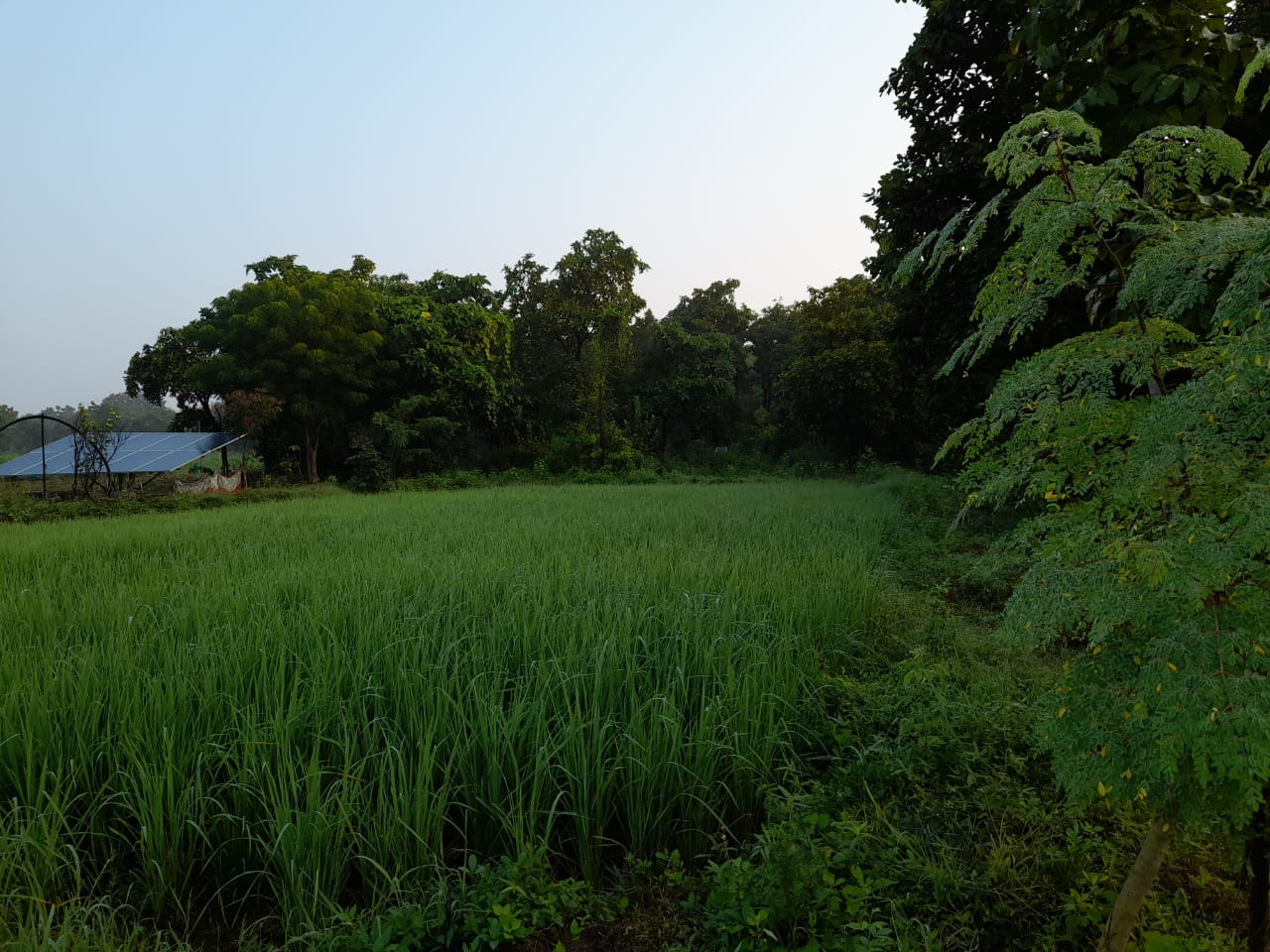
In peripheral areas, he planted what is known as a ‘sacrificial crop’ in farm language. These are cheaper versions of the plant in the main area. He added low-cost seeds of cotton. The idea, he says, was to keep pest attacks on the fringes, while allowing animals to feed on the leaves.
Besides the crops, Anirudh planted fruit-bearing trees such as mahua, chironji, Indian gooseberry, oranges and mangoes. However, the highlight of his farming is bringing back the native ‘Chinnor’ rice. Several farmers had stopped cultivating the rice to make way for cash crops. But seeing his farming, a few in the region are following suit.
Over the years, the farm’s yield has significantly increased. The initial purpose was to become self-sufficient, but now, Anirudh is able to sell his produce in the market. Dealing with sellers and middlemen, Anirudh experienced firsthand unjust trading practices, which further motivated him to form an informal community organisation of farmers.
“Anirudh holds weekly meetings with farmers to discuss the latest technologies, how to effectively grow crops, marketing tips that can fetch a decent price, and so on. Several farmers, including myself, have benefited from his expertise. In my next crop cycle, I will reduce cotton production by 50% and replace it with Chinnor rice variety,” Yuvraj, the village sarpanch, tells The Better India.
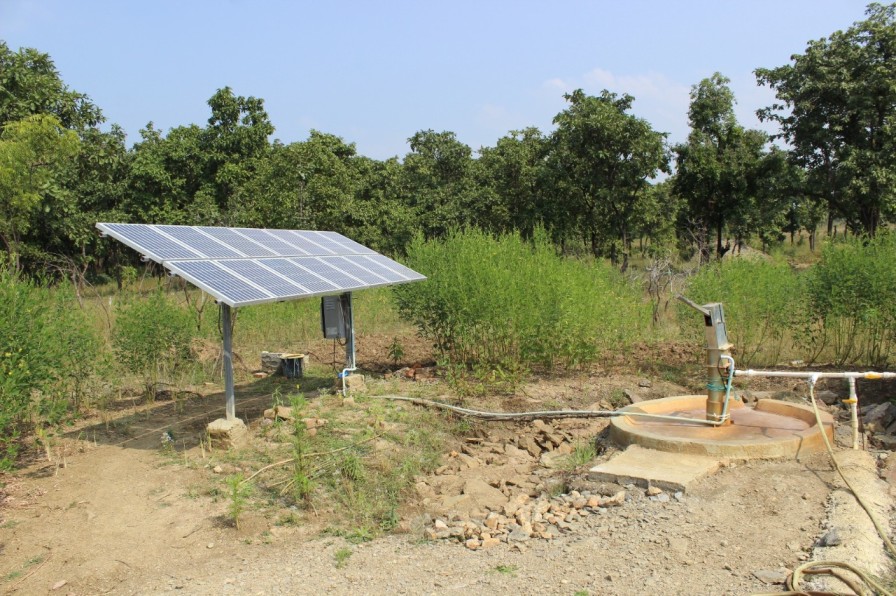
Anirudh also credits his practice of rainwater conservation for the high yield. He has built several reservoirs, ponds and borewells that can conserve two crore litres of water in total every year. Additionally, the collected water has also recharged the groundwater tables.
Coexistence with animals
Wild animals such as tigers, chital, sambar, neelgai, langur, wild boar, civet and big cats are often spotted travelling back and forth between Umred Karhandla Wildlife Sanctuary and Tadoba Andhari Tiger Reserve through the forest area. However, the path leading to either of the sanctuaries contain numerous farms.
Thus, man-animal conflict is a common sight in Mangli. Farmers often take steps such as electric fencing, poison baits and toxic chemicals to save their crops, and in the process, kill the animals.
Aware of this pertinent issue, Anirudh made provisions to coexist with animals through various means. He created saucer-shaped waterholes to direct animals to a certain path. Along that path, he built solar fencing that makes noises to ward off animals. Similarly, a part of the farm is selectively enclosed by a chain-link fence, so as not to block the movement of animals completely and allow them access to the waterbody.
“While it is too soon to gauge if animal deaths have decreased, this is at least a good start. This is their habitat and we must respect it. I do understand a farmer’s dilemma, but if we take small efforts, such as changing crop patterns or putting fences that only make noise, it can go a long way,” Anirudh says.
Edited by Divya Sethu
If you found our stories insightful, informative, or even just enjoyable, we invite you to consider making a voluntary payment to support the work we do at The Better India. Your contribution helps us continue producing quality content that educates, inspires, and drives positive change.
Choose one of the payment options below for your contribution-
By paying for the stories you value, you directly contribute to sustaining our efforts focused on making a difference in the world. Together, let’s ensure that impactful stories continue to be told and shared, enriching lives and communities alike.
Thank you for your support. Here are some frequently asked questions you might find helpful to know why you are contributing?


This story made me
-
97
-
121
-
89
-
167













